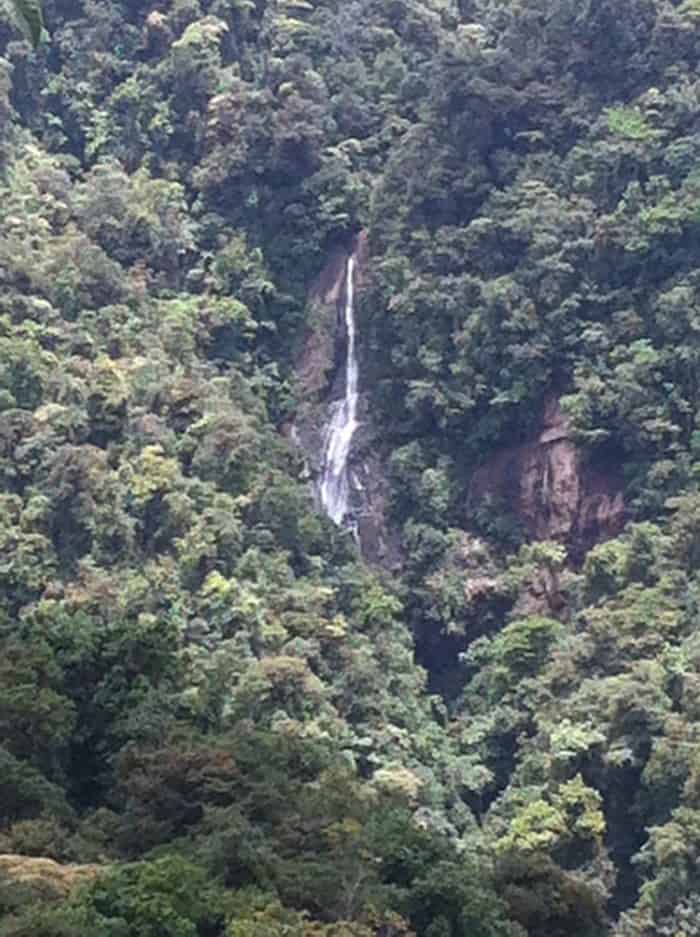An hour and a half southeast of San José, Tapantí National Park, on a good day, will placate visitors with the quiet thunder of the Orosi River, the warm smell of damp forest and a thousand shades of green. Tapantí, combined with the larger Macizo de la Muerte sector of the same park, is a 58,500-hectare (145,000-acre) home to 300 species of birds, 64 species of reptiles and amphibians, 45 species of mammals and a whole lot of insects, according to the park s promotional literature.
Most of the mammals out by day are humans, though on a recent Tico Times expedition to Tapantí, we saw only two. (This is excepting a handful of park rangers and workers with the Costa Rican Electricity Institute [ICE], which runs a hydroelectric operation farther up the road.)
The park allows visitors between 7 a.m. and 5 p.m. along a four-kilometer road and on three short trails into the forest and to the river, where they can bathe in the fast water at their own risk. Those who want to get deeper into Macizo de la Muerte can hire a park service guide and walk eight hours through the mountains from La Esperanza, on the Inter-American Highway southeast of San José, to Río Macho, near the entrance to the Tapantí sector.
Some might be frustrated not to hike or camp in the park s wilderness, which borders Chirripó National Park, but most should appreciate that it is wilderness, except for the electrical plant, and that the headwaters of at least seven major rivers are protected within.
Next to a stuffed puma about to snatch an anteater, a sign in the visitor center states that waters from Tapantí-Macizo de la Muerte provide half of San José s drinking water and 20% of Costa Rica s electricity.
We arrived at about 9:30 on a sunny morning. We drove to the lookout point at the end of the public-access road, stopping a couple of times to smell the air, listen to the birds and insects and look at the ice-gray Orosi River plowing through giant boulders about 50 meters below. Moving to the shade of giant ferns, the heat dissipated and the smells became cool and earthy. Sun or shade, the atmosphere goes well with a plate of cookies and thermos of coffee.
You could take in such a snack at the end of the-road hut perched on a brushy outcropping, looking at a distant waterfall that cuts from the Talamanca Mountains, but a better option is by the river, down the Sendero la Catarata (Waterfall Trail). We explored the rocks and waded in the cold water, taking caution not to be swept into the rapids. Generally, the park was clean.
There was the odd piece of scrap metal among the rocks, such as a meter-long chunk of narrow-gauge railroad track complete with metal cross ties, but these felt archeological, worn by time and water, as opposed to plastic trash, which we didn t see.
Around 11:15, clouds pulled in and we started feeling little droplets of rain. We ignored this for a while, taking refuge on the trails in the woods, but at 11:45 it started pelting us.We drove back to the visitor center.
By noon, the rain let up, making us wonder if we should have started hiking the twokilometer Árboles Caídos (Fallen Trees) loop, where park ranger Eduardo Rojas said some German and Costa Rican tourists recently came across jaguar tracks. By 12:07, we were glad we didn t, as water blasted us in a reminder that guidebooks call this one of Costa Rica s rainiest spots.
Tapantí means torrent from the heavens, we learned at the visitor center. In spite of the rain, it’s a beautiful park, a peaceful break from San José, and so much the better knowing that beyond its shoulders is so much protected land.
Getting There
To drive to Tapantí National Park, head east out of San José to Cartago and continue through Paraíso, then on to Orosi, which is about 10 kilometers short of the park and 40 from San José. Leaving Paraíso, the view improves tremendously and brings a sense of quiet that preludes Tapantí’s. The Orosi valley opens its arms and you trickle down the road to a small river, gazing all the while at the empty space between fertile mountains.
The town of Orosi is to the left at the bottom of the hill. It offers plenty of options for food and lodging, and if you’ve come this far by bus, you can take a taxi or hoof it the last bit to the park entrance.
After passing Orosi, cut right to go through Río Macho and on to Tapantí’s entrance. The road, which is gravel from Orosi, is fairly smooth and without steep hills.
Buses leave San José for Cartago every 10 minutes; from southeast of the ruins in Cartago, the Orosi bus leaves at least every half-hour. Each bus costs about ¢300 ($0.60) and will take about 45 minutes. Taxis from Orosi to Tapantí are about ¢5,000 ($9.75) each way, slightly more to get to the end of the road inside the park.
Lodging in the Area
Kiri Lodge: 1 km before park entrance off road from Orosi. Restaurant, bar and trout pond.
Monte Sky: Private reserve 2 km off Orosi-Tapantí road
Hotel Río Orosi: 2 km from Orosi on road to Palamo,
Hotel Tapantí Media: Orosi
Tetey Lodge: Orosi
OrosiValley Farm Bed and Breakfast: On the road between Paraíso and Orosi,






